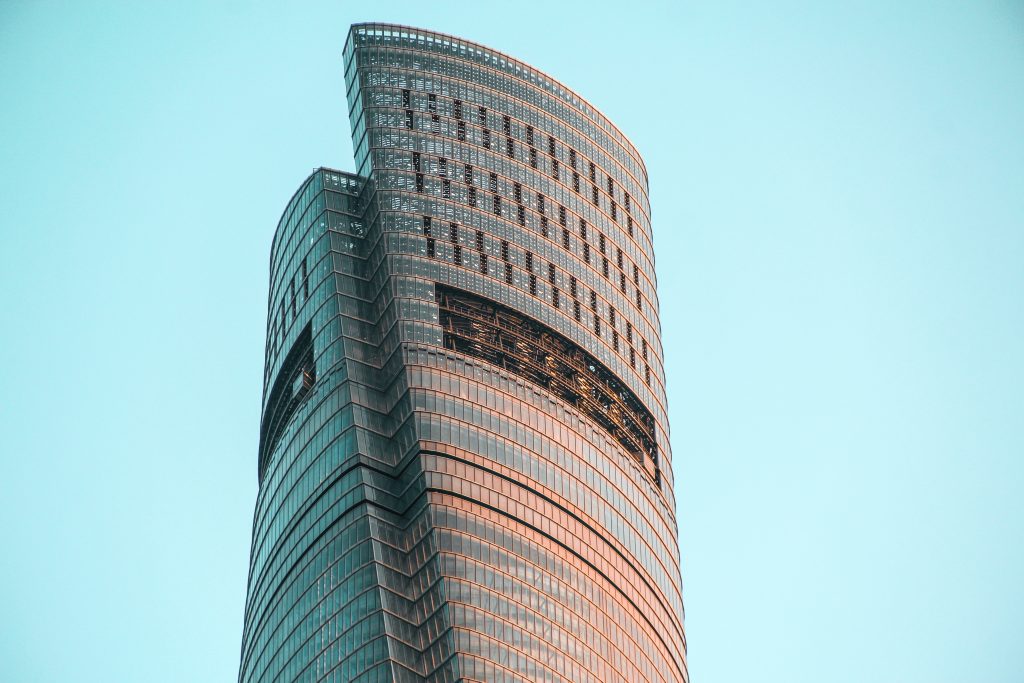Welcome to the exciting world of structural steel detailing, where the art of precision meets the science of construction. If you’ve ever been involved in a construction project, you’ve likely come across the term “shop drawings.” These drawings are the unsung heroes of the building process, and they play a pivotal role in ensuring that what you envision becomes a tangible reality.
In this guide, we’re going to peel back the curtain and explore the intriguing question: Who, my dear readers, draws these shop drawings? It’s a question that often lingers in the minds of those venturing into the realm of construction, and we’re here to provide some enlightening answers.
The Role of Structural Steel Detailers
Before we dive into the world of shop drawings, let’s meet the artists behind the scenes – the structural steel detailers. These individuals are the maestros of precision, the architects of meticulousness, and the unsung heroes of the construction world.
What Do Structural Steel Detailers Do? Detailers are essentially the translators of architectural and engineering designs. They take the complex, often abstract plans created by architects and structural engineers and turn them into highly detailed, precise shop drawings. These drawings serve as the instruction manual for fabricating and assembling the structural steel components of a building.
Skills of the Trade Now, you might be wondering what skills one needs to be a detailer. Well, it’s not just about knowing how to wield a drafting pencil (or these days, a digital stylus). Detailers need to have a deep understanding of construction materials, welding processes, and structural engineering principles. They must be well-versed in industry standards and codes, and they should be able to work with precision down to the tiniest detail.
Who Creates Structural Steel Shop Drawings?
The answer to our question is quite straightforward: shop drawings are typically created by, you guessed it, structural steel detailers. They are the architects of the detailed plans that will guide the construction crew in putting together the steel framework of a building.
The Detailer’s Toolkit Now, you might be wondering about the tools of the trade. In the digital age, detailers rely on advanced software to create shop drawings. Programs like AutoCAD and Tekla Structures are their virtual canvases, allowing them to draft with precision and efficiency. Gone are the days of manual drafting (for the most part), as technology has revolutionized this field.
The Collaborative Ballet of Construction
But here’s where it gets interesting – shop drawings are not a solo act. This is where the collaborative ballet of construction comes into play. Detailers are not lone wolves; they work closely with a team of professionals, including structural engineers, architects, and contractors.
Teamwork Makes the Dream Work Structural engineers provide the crucial calculations and specifications that detailers need to incorporate into their drawings. Architects ensure that the design aesthetics and functional aspects align with the original vision. Contractors bring their practical expertise to the table, making sure that the plans can be executed smoothly on the construction site.
The Exchange of Wisdom This collaboration involves a constant exchange of information, feedback, and refinement. It’s a bit like a symphony, where each instrument plays its part to create a harmonious whole. The detailer’s role is to translate the input from various team members into clear and precise shop drawings that will guide the construction process.
In essence, shop drawings serve as the bridge that connects the design vision with the practical execution on the construction site. They ensure that what’s on paper can be brought to life with precision and accuracy. In this dance of collaboration, every step is carefully choreographed to achieve the desired outcome.
The Choice: In-House Detailing vs. Outsourcing
Now that we’ve become acquainted with the structural steel detailers and their pivotal role, let’s step into the intriguing realm of decision-making: Should you keep the detailing process in-house, or should you outsource it to the pros? It’s a choice that can significantly impact the outcome of your construction project.
In-House Detailing: The Benefits and Challenges
The In-House Advantage For larger construction companies with the resources and expertise, maintaining an in-house detailing team can be a strategic move. It allows for greater control over the detailing process, fosters better communication between team members, and ensures a seamless flow of information between the architects, engineers, and detailers.
Expertise at Your Fingertips Having an in-house team means that you have direct access to detailers who are intimately familiar with your company’s standards and practices. They become an integral part of the project, collaborating closely with the design and construction teams.
The Challenges However, it’s not all sunshine and rainbows. Managing an in-house detailing team can be a considerable undertaking. It requires investment in personnel, software, and ongoing training to stay current with industry advancements. Smaller companies might find it more challenging to maintain an in-house team, making outsourcing a more viable option.
Outsourcing: The Pros and Cons
The Outsourcing Advantage Outsourcing your structural steel detailing needs to specialized firms can be a practical solution, especially for projects with limited resources or specific expertise requirements. Outsourcing offers flexibility, as you can scale up or down as needed for different projects.
Access to Specialized Talent When you work with a reputable detailing firm, you gain access to a pool of detailers with diverse expertise. They are well-versed in industry standards and software tools, ensuring that your shop drawings are of the highest quality.
The Challenges Outsourcing does come with its own set of challenges. Effective communication and coordination become crucial when working with external teams. Misinterpretations or misunderstandings can lead to costly revisions down the line. Additionally, you might have less control over the process compared to in-house detailing.
The Verdict: It Depends
So, which path should you choose? The decision between in-house detailing and outsourcing ultimately depends on your specific project requirements, budget, and available resources. Larger companies with the capacity to maintain an in-house team may opt for that route to ensure seamless integration within their organization.
On the other hand, smaller firms or those with varying project demands may find outsourcing to be a more cost-effective and efficient solution. It allows you to tap into specialized talent without the long-term commitment of an in-house team.
In the end, the choice should align with your project’s unique needs and your organization’s capabilities. Whether you decide to have your detailers in-house or partner with external experts, the goal remains the same: to ensure that your shop drawings are precise, accurate, and a guiding light in the construction journey. At Steel Detailing Australia we are the local leaders in steel, precast concrete detailing & Rebar Detailing.
The Crucial Role of Quality Assurance in Shop Drawings
Welcome back to our journey through the world of structural steel detailing. In the previous sections, we’ve learned about the artisans who craft shop drawings and the decisions involved in choosing between in-house detailing and outsourcing. Now, let’s explore the critical aspect of quality assurance, a process that ensures the precision and compliance of those intricate drawings.

The Importance of Quality Assurance
Imagine constructing a skyscraper without a solid foundation. It’s a recipe for disaster. Similarly, in the world of structural steel detailing, quality assurance is the foundation upon which a successful construction project is built. It’s the meticulous process of reviewing and verifying shop drawings to guarantee that they align with design specifications, industry standards, and safety regulations.
Accuracy Is Paramount When it comes to structural steel, precision is not a mere suggestion; it’s an absolute requirement. A minor error in a shop drawing can lead to costly delays, structural issues, or even safety hazards. Quality assurance is the safety net that catches these errors before they become on-site headaches.
The Review Process
Quality assurance in shop drawings involves a thorough review by a team of experts. This team often includes structural engineers, architects, and, of course, detailers themselves. Each member brings their unique perspective to the review process, ensuring that every angle is examined.
The Checklist of Accuracy During the review, the team checks various aspects of the shop drawings, including:
- Dimensional Accuracy: Are the measurements precise and consistent?
- Material Specifications: Do the materials specified in the drawings meet the project’s requirements?
- Compliance with Codes: Are the drawings in line with industry standards and local building codes?
- Clash Detection: Are there any clashes or conflicts between different structural elements?
Iterative Process The review process is often iterative, with feedback provided to the detailer for necessary revisions. This collaborative approach ensures that any discrepancies or issues are addressed before they reach the construction site.
Industry Standards and Codes
In the world of construction, adherence to industry standards and building codes is non-negotiable. Structural steel detailers must be well-versed in these standards, as they form the basis for creating shop drawings.
Common Codes Some common codes that detailers need to consider include:
- American Institute of Steel Construction (AISC): Provides guidelines for the design, fabrication, and erection of structural steel.
- American Welding Society (AWS): Covers welding processes and qualifications for structural steel.
- Local Building Codes: These vary by region and must be adhered to for regulatory compliance.
The Stakes Are High
It’s crucial to understand that the consequences of inadequate quality assurance can be severe. Structural failures, delays, and costly rework can result from inaccuracies or non-compliance in shop drawings. This not only impacts the project’s timeline but also its budget and, most importantly, safety.
The Future of Quality Assurance
As technology continues to advance, quality assurance processes are evolving. Building Information Modeling (BIM) is one such game-changer. BIM enables a more integrated and collaborative approach to construction, allowing for real-time error detection and clash prevention. For information visit: https://www.steel.org.au.
Frequently Asked Questions (FAQs)
Before we conclude our comprehensive guide to structural steel detailing, let’s address some common questions that often arise when discussing this intricate field.
1. Q: Are shop drawings legally binding documents?
- A: Shop drawings are typically not legally binding contracts, but they play a vital role in construction projects. They serve as essential references for the construction team to follow and ensure that the design intent is realized.
2. Q: Can contractors create their own shop drawings?
- A: While contractors can create their own shop drawings, it’s common to rely on specialized structural steel detailers for this task. Detailers bring expertise in translating design and engineering plans into precise construction instructions.
3. Q: How long does it take to create shop drawings for a typical project?
- A: The timeline for creating shop drawings varies based on project complexity, size, and the availability of information. It can range from a few weeks for smaller projects to several months for larger, more intricate structures.
4. Q: What qualifications should I look for when hiring a structural steel detailer?
- A: When hiring a structural steel detailer, consider their education, experience, and proficiency in detailing software. Look for individuals or firms with a strong attention to detail and a portfolio that demonstrates their expertise.
5. Q: What role does shop drawing quality play in construction safety?
- A: Shop drawing quality is paramount to construction safety. Accurate and precise shop drawings ensure that the structural components are fabricated and assembled correctly, reducing the risk of structural failures and safety hazards on the construction site.

